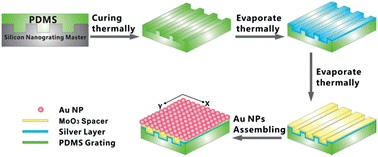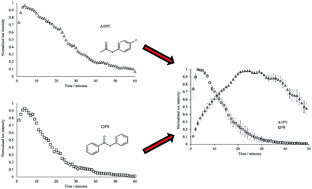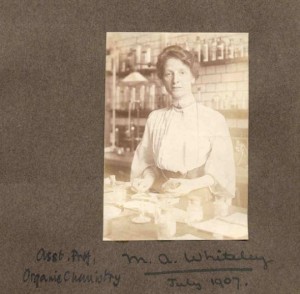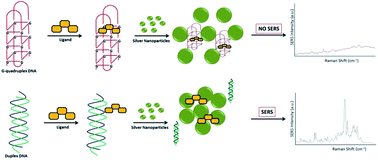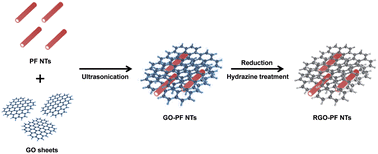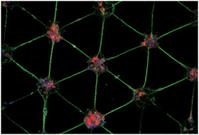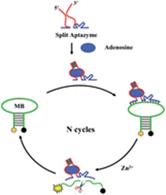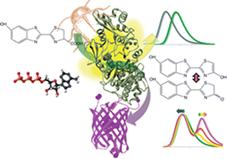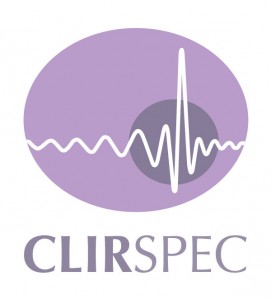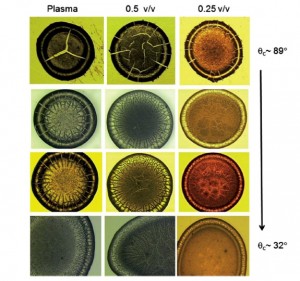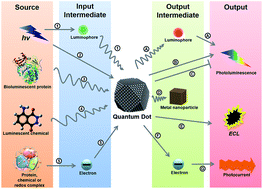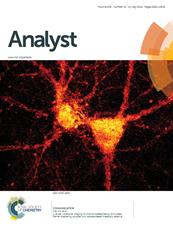Take a look at our recent HOT Analyst articles, these are now free to access for the next few weeks!
Designing and fabricating double resonance substrate with metallic nanoparticles–metallic grating coupling system for highly intensified surface-enhanced Raman spectroscopy
Ying Zhou, Xuanhua Li, Xingang Ren, Liangbao Yang and Jinhuai Liu
Analyst, 2014, Advance Article
DOI: 10.1039/C4AN00540F
Bimetallic Pd–Pt supported graphene promoted enzymatic redox cycling for ultrasensitive electrochemical quantification of microRNA from cell lysates
Fang-Fang Cheng, Jing-Jing Zhang, Ting-Ting He, Jian-Jun Shi, E. S. Abdel-Halim and Jun-Jie Zhu
Analyst, 2014, Advance Article
DOI: 10.1039/C4AN00777H
Recent developments in proteomic methods and disease biomarkers
Nina Bergman and Jonas Bergquist
Analyst, 2014, Advance Article
DOI: 10.1039/C4AN00627E
An Ru(II)–Fe(III) bimetallic complex as a multifunctional device for detecting, signal amplifying, and degrading oxalate
Cheuk-Fai Chow, Pui-Yu Ho and Cheng-Bin Gong
Analyst, 2014, Advance Article
DOI: 10.1039/C4AN00350K
High specific detection of osteopontin using a three-dimensional copolymer layer support based on electrochemical impedance spectroscopy
Hongxia Chen, Qiaohan Mei, Shengsong Jia, Kwangnak Koh, Keming Wang and Xinjian Liu
Analyst, 2014, Advance Article
DOI: 10.1039/C4AN00576G
Fluorometric/colorimetric logic gates based on BODIPY-functionalized mesoporous silica
Heekyoung Choi, Ji Ha Lee and Jong Hwa Jung
Analyst, 2014, Advance Article
DOI: 10.1039/C4AN00251B
Monitoring UVR induced damage in single cells and isolated nuclei using SR-FTIR microspectroscopy and 3D confocal Raman imaging
Ewelina Lipiec, Keith R. Bambery, Philip Heraud, Wojciech M. Kwiatek, Don McNaughton, Mark J. Tobin, Christian Vogel and Bayden R. Wood
Analyst, 2014, Advance Article
DOI: 10.1039/C4AN00838C
Up-regulating pyocyanin production by amino acid addition for early electrochemical identification of Pseudomonas aeruginosa
Hunter J. Sismaet, Thaddaeus A. Webster and Edgar D. Goluch
Analyst, 2014, Advance Article
DOI: 10.1039/C4AN00756E
Analysis of ethyl and methyl centralite vibrational spectra for mapping organic gunshot residues
Jianbo Zeng, Ji Qi, Fuquan Bai, Jorn Chi Chung Yu and Wei-Chuan Shih
Analyst, 2014, Advance Article
DOI: 10.1039/C4AN00657G
Separation and sensitive determination of sphingolipids at low femtomole level by using HPLC-PIESI-MS/MS
Chengdong Xu, Eduardo Costa Pinto and Daniel W. Armstrong
Analyst, 2014, Advance Article
DOI: 10.1039/C4AN00775A
Affinity-based precipitation via a bivalent peptidic hapten for the purification of monoclonal antibodies
Michael W. Handlogten, Jared F. Stefanick, Peter E. Deak and Basar Bilgicer
Analyst, 2014, Advance Article
DOI: 10.1039/C4AN00780H
Parameters affecting ion intensities in transmission-mode direct analysis in real-time mass spectrometry
Lindsay P. Harding, Gareth M. B. Parkes and James D. Townend
Analyst, 2014, Advance Article
DOI: 10.1039/C4AN00859F


